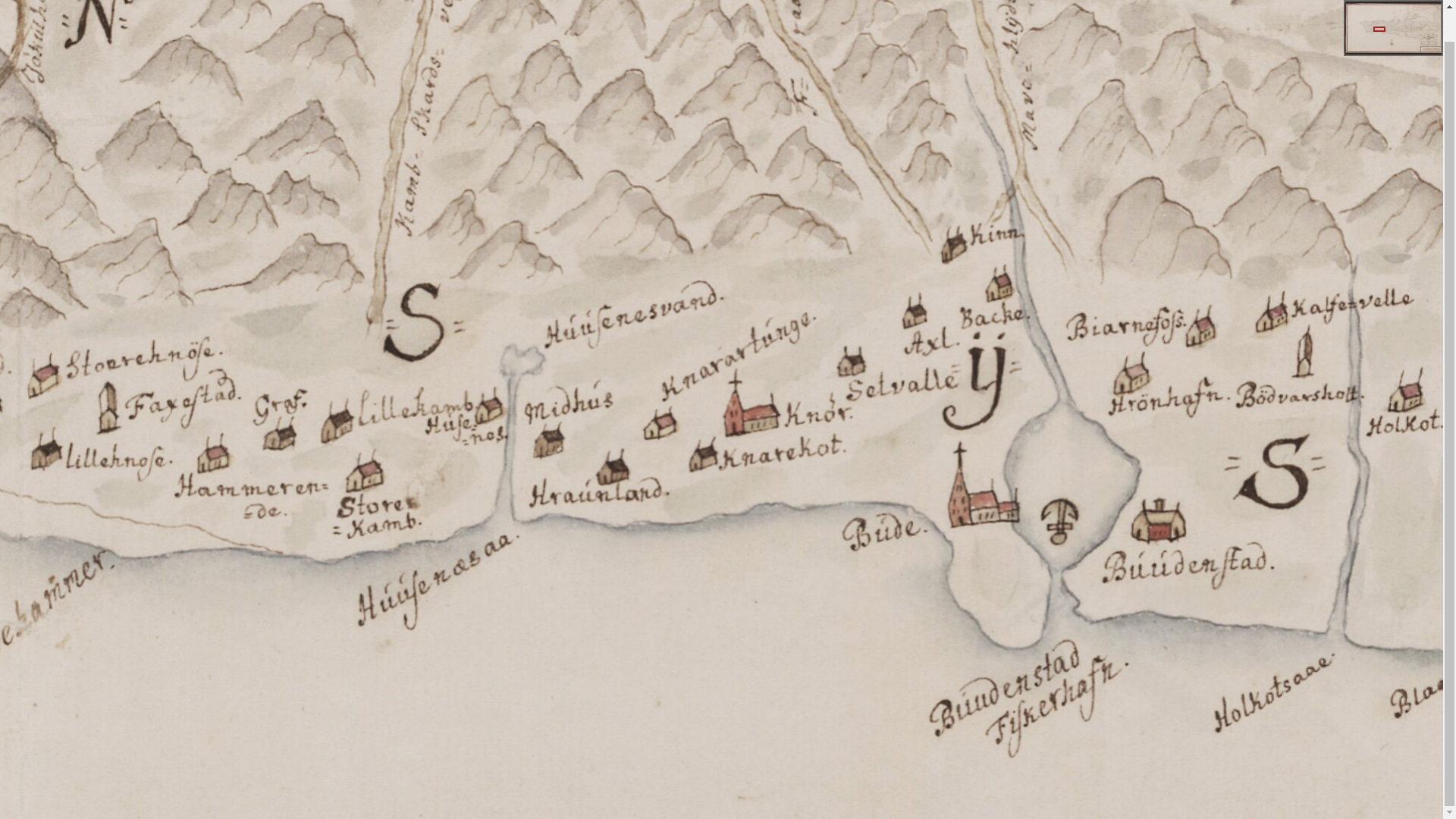The project aims to provide a detailed analysis of social and economic relations and structures of rural society in early 18th century Iceland. The farm household is the primary unit of analysis and the research will focus on three themes: Landownership and landlord-tenant relations, the household economy, and the demographics on households and families.
The research is divided into six work packages as follows:
- Landlords and tenants
This study analyses the ownership and structure of landed property, different forms of farms, and who controlled and secured the income derived from land and farming. The study examines the social and economic transactions between landlord and tenant and the different forms of wealth extraction (land rent, livestock leases, labour services and other dues). The key research questions are: What were the main forms of ownership? How was the distribution of landed property around 1700 and did it vary across regions and localities? How do we account for these variations? Did landlord rent vary between different categories of landownership?
Research team: Guðmundur Jónsson, Ingibjörg Jónsdóttir and Óskar Guðlaugsson
- The institutions of höfuðból and útjarðir
This study aims to discover how access to land was structured in different types of landholdings through legislation and custom. What types of landholdings existed in Iceland around 1700? In particular, we explore to what extent the institution of höfuðból (manor) and útjörð (outlying farm), still existed and, if so, what was their significance in the rural economy? To what extent did höfuðból have resources outside the farm at its disposal such as hay, wood, hayfields, pastures, driftwood and fishing? Did höfuðból display characteristics typical of urban settlements? Were höfuðból in some instances nascent forms of villages? What are the closest Scandinavian equivalents to the Icelandic höfuðból?
Research team: Árni Daníel Júlíusson and Ingibjörg Jónsdóttir
- Production, income and expenditure of the farm household
The main aim of this study is to establish what resources were available to the farm/household and how they were used. Farm budgets showing estimated income and expenditure of the farm are constructed for selected farms that will give indications of living standards and the relative size of the most important categories of income and expenditure. Incomes will be estimated using data on land value, land resources, livestock, fishing and working-age population. Expenditures are estimated primarily from data on consumption, landlord extraction and taxes. Research questions include: Can we estimate the main sources of income of the peasant farmer? How did income vary with location and ownership of land? What was the nature and magnitude of the wealth extraction of tenant farmers by landlords in the form of land rent, livestock leases, labour services and other dues, and how did it vary in terms of geography and types of landownership?
Research team: Guðmundur Jónsson, Óskar Guðlaugsson
- The relationship between socio-economic situation and geographic dimensions of the family and the household
This study explores household and family structures in socio-economic and spatial settings, thus seeking to integrate demographic, economic and geographical data. The emphasis is on regional and local variations in the size and composition of families and households, the number of working age inhabitants, and the number of dependants. For that purpose, we undertake case studies of individual households, seeking to integrate the demographics and the economics of the family. The main research questions are: How did size and composition of households vary between regions and what are the explanations for the variance? To what extent did wealth and status influence household demographics? Were there differences in the size household composition and family structures between densely populated coastal areas and upland rural areas? The study seeks to assess to what extent there were differences in life course transitions between regions and to what extent socio-economic status influenced those events.
Research team: Ólöf Garðarsdóttir, Sigríður Hjördís Jörundsdóttir and Ingibjörg Jónsdóttir
- Construction of a GIS database
The work entails the construction of a database containing a wide variety of economic, demographic and spatial data related to families, households and farms. The economic data are primarily extracted from the Land Register of Árni Magnússon and Páll Vídalín 1702–1714 and the livestock census of 1703. The attributes include name of the farm, location, deserted farms, land value, ownership, land rent, livestock rent and dues, and the number and composition of livestock. The demographic data, taken from the 1703 population census, include name, sex, age, household status and occupation. The spatial data include physical landscape, location of farms and the boundaries of parishes (sóknir), communes (hreppar) and districts (sýslur). The database will provide systematic and harmonised data that will be used for statistical and spatial analysis.
Research team: Björgvin Sigurðsson and Óskar Guðlaugsson
- Spatial analysis of farms
This study examines the relationship between farms and features in the physical and cultural landscape. The wealth of variables connected to each farm, such as type, size and value, population and livestock, will further deepen the study. The focal tasks within this work package are: a) Farm sites in the physical landscape: Height above sea level, distance from the sea, topography, land type, slope and aspect. Can we identify patterns in the infrastructure and land use, and whether they relate to the physical environment? What is the relationship between farm properties and the physical landscape? What defined farm density and positioning, and what does it tell us about the available resources? b) Farms’ relations to cultural centres and main transport routes at the time. Settlement density, distance from centres and known routes, connection with seasonal fishing villages are examined.
Research team: Ingibjörg Jónsdóttir and Óskar Guðlaugsson
